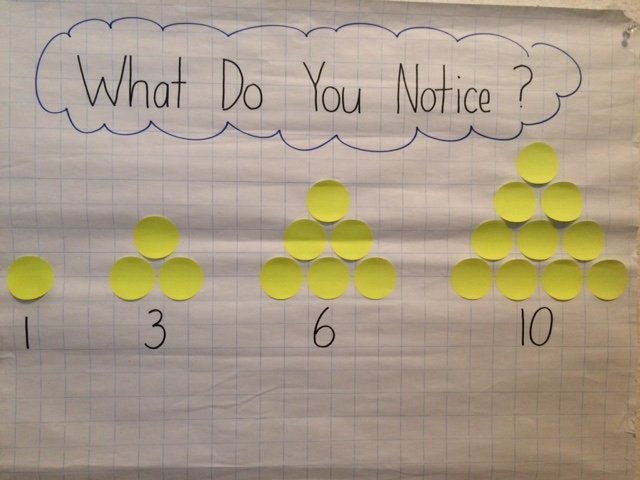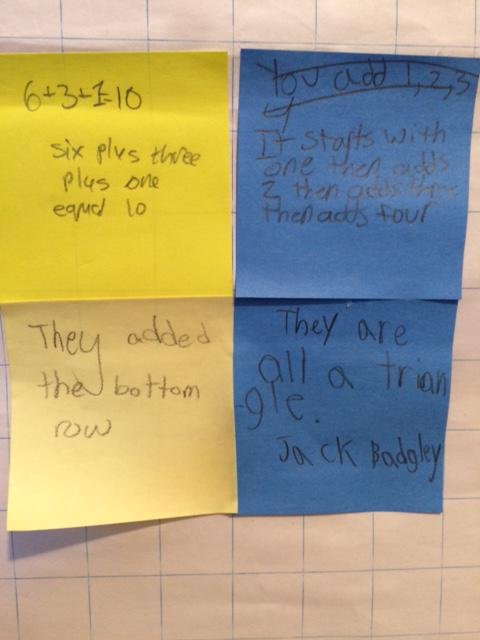
Primary students (K-2): shapes, counting, pattern
Intermediate students (3-5): shapes, number patterns
Triangular numbers get their name from the shape made when a series of dots are used to create equilateral triangles. The first four "dot" triangles can be seen in the photo with the corresponding triangular numbers represented underneath. The numbers represent the addition of all the dots in the triangle. In order to continue the sequence, a new row of dots is added to the bottom. This new row is made up of the previous row plus one more.
Looking for patterns, students may notice that in order to determine the next triangular number in the sequence, they would need to add the next consecutive number in the pattern of differences between the previous triangular numbers. For example:

The first nine numbers in the sequence are: 1, 3, 6, 10, 15, 21, 18, 36, 45...

"6 + 3 + 1 = 10. Six plus three plus one equals 10."
"It starts with one then adds 2 then adds three then adds four."
"They added the bottom row."
"They are all in a triangle."